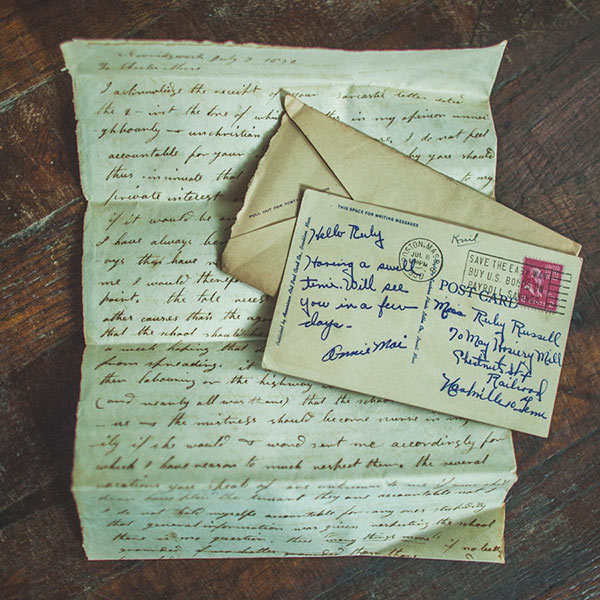THE LOST ART OF WRITING A LETTER

Letter writing is one of the oldest forms of communication. In fact, sending a letter was still the most relevant form of communication until 1965 until the very first email was sent at MIT. After email, we quickly graduated to AIM, text messages, FaceTime, and of course, the telephone. That’s the point of today’s blog: To inspire you to dial it back to yesteryear by penning a letter this week… and yes, actually sending it.

Just before you start thinking that mail is a has-been, take a quick glance at these interesting postal facts:
- In 1775, the Second Continental Congress established the U.S. postal system, nominating Benjamin Franklin as its first postmaster general. He helped establish the first mail routes, post offices, and rate charts!
- Today, the United States has more than 40,000 post offices.
- An estimated 212 billion pieces of mail are delivered each year to more than 144 million homes and businesses in America.

So, let’s add a few more letters to that national average and keep those postal workers busy with your upcoming letter. Conveniently, Mother’s Day is May 8th. Surprise her with a special handwritten letter with a few easy steps, you know, in case you’ve forgotten:
- Treat yourself to some fancy stationary.
- Pick up your favorite pen. (We all know our printing skills have been slacking thanks to the keyboard. You may need to take a few practice swings to make your handwriting not look like chicken scratch. We believe in you!)
- Write from the heart.
- Walk inside the post office and request some Forever Stamps.
- Drop the letter into the mailbox.
- Wait in anticipation of a handwritten reply.
One final tip! Before you send any letter, keep track of the person’s address so you can call on it for future letters. They make real nice address books these days.




